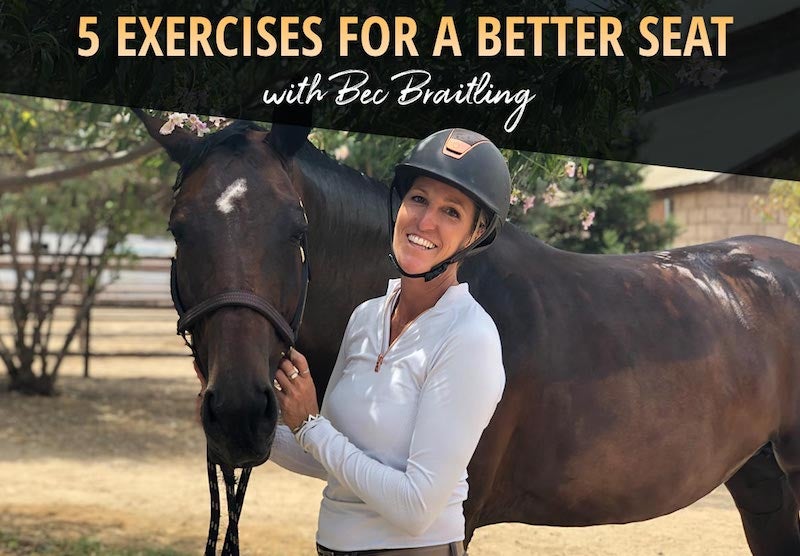How to Ride Different
Cross Country Fences
Navigating Corners, Terrain- Based Questions, Down Banks, and More!
The phase in three-day eventing that sets it apart from other disciplines is cross country, also known as XC. Most event riders will go as far as to say it is the reason they chose the discipline in the first place. Having fun on the cross-country course takes a steady and adjustable horse, as well as a knowledgeable and confident rider. When on the course, horse and rider pairs are met with various types of terrain, jump styles, and technical tasks. Knowing how to ride these different obstacles will help make your round smooth and straightforward.
Watch below as Sponsored Rider and 5* eventer Bec Braitling shares her advice on how to navigate different cross-country fences!
Questions vs Elements
Part of the fun of the cross-country phase is that throughout the duration of a course, a rider and horse pair will encounter a variety of obstacles or "questions". A question refers to a jump(s) that is labeled under one number (jump 14 vs jump 15). This is important to know when reading a course because one question can have multiple elements within it (14A vs 14B). Multiple elements are common in cross-country courses and could include banks, ditches, water, jumps, and more.
How horse and rider navigate these different questions depends upon the terrain that is related to the question, as well as the type and shape of the jump, among other factors.
The First Fence on Course
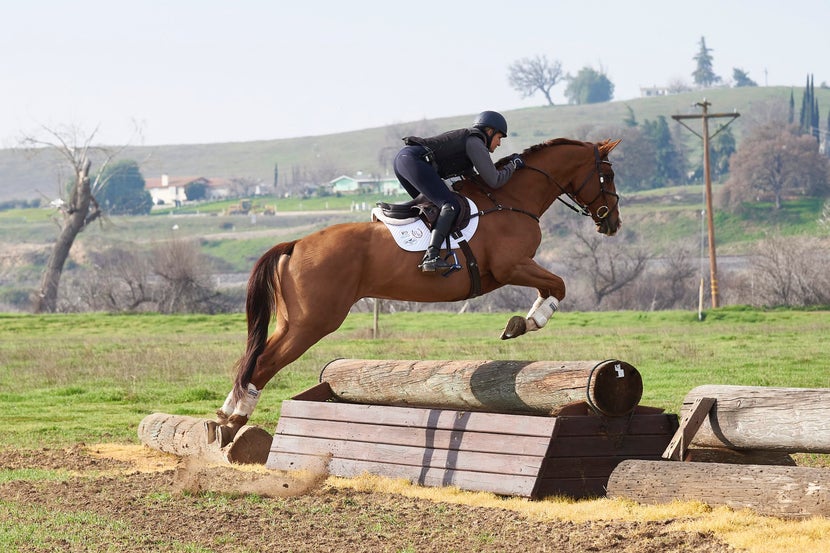
While you might think that the first fence looks like one of the easiest fences on course, it has the potential to catch horses and riders by surprise. Since you come out of the startbox from a standstill, you won't have much pace initially. Horses may also be reactive to the fact that they are leaving the warm-up, along with the other horses, so keeping the forward intention is important.
Bec’s Tips:
- When leaving the startbox, your goal should be to have the least number of strides from the startbox to the first fence. This helps get the horse in front of your leg.
- An open, moving distance to the first fence sets the tone for the rest of the course.
Jumping Corners
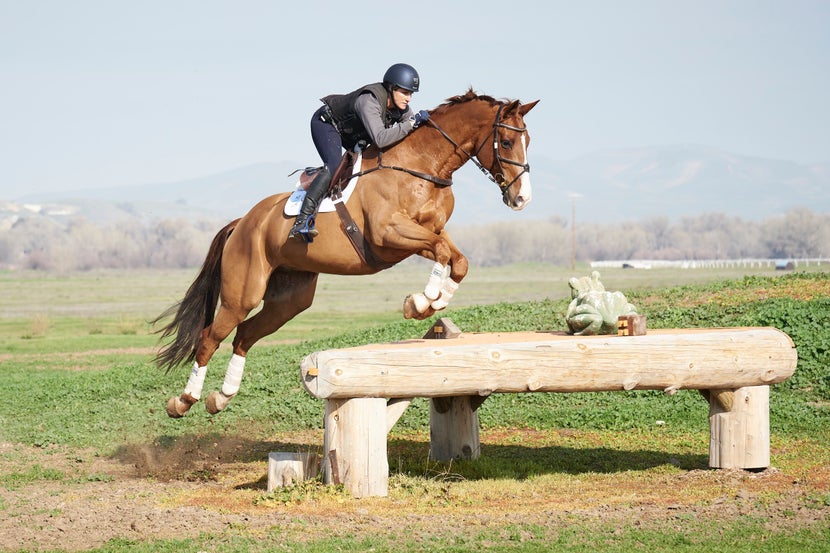
A common cross-country question you might see throughout the levels is a corner. A corner is a combination of an accuracy question and a scope question. In the lower levels, corners will be more inviting with a longer face and less width. As you move up the levels, the face will become narrower and the corner will become wider.
Bec’s Tips:
- As you prepare for a corner, come out of your gallop with balance and control on the approach.
- When you are on your line to the corner, use your leg to keep riding forward to a deep distance.
- Take care to protect the side that encourages the run-out. (The pointy side of the corner!)
Terrain Questions
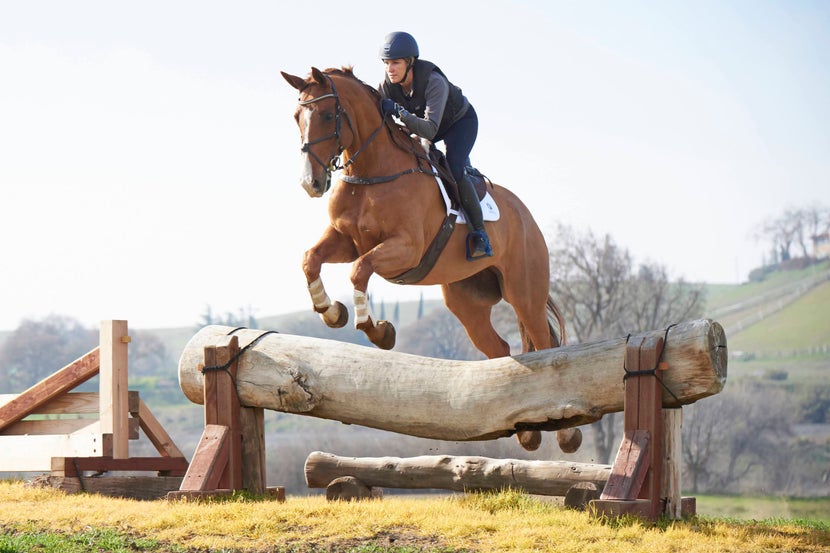
Terrain questions, including jumps on mounds, are popular from the most basic level all the way through to the upper levels. It’s common to see a small fence on a mound and as the level increases, the question will become quite tall and narrow and the mound will become steeper and taller.
Bec’s Tips:
- Note that the hill changes the way that you approach the fence by helping set up the horse for the jump.
- Keep galloping to the base of the hill and once you arrive there, check that the horse’s ears are up and focused on the fence.
- Make a point to control your body position on landing from the fence so you sit tall and land in your feet.
Jumping Down Banks

Starting at the most basic levels of eventing, you may encounter a down bank. The lower levels will see a shorter drop and as the level of difficulty increases, the drop will get larger and there may be other obstacles, such as a lip, water, or another jump upon landing.
Bec’s Tips:
- Your horse should approach down banks, including down banks into water, in a collected canter.
- Get the horse’s toes as close to the edge of the down bank as possible so that the horse is rideable and prepared for the next question upon landing.
- When you get to the edge of the down bank, close your lower leg and allow the horse to step down off of the bank, letting the reins slip through your fingers.
- If the bank has a lip, there will be a bit more of a jump with a drop landing. Make sure you are tall in your upper body, landing in your feet, and looking toward whatever is next.
Galloping Fences
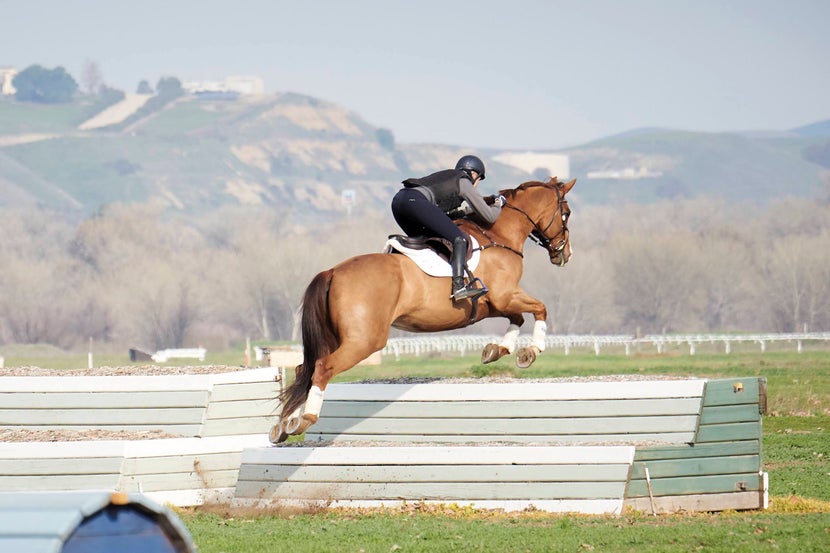
One of the most common fences you find on cross country is a basic gallop fence. These jumps are typically wider with a bit of an ascending face. Galloping fences are meant to allow you to change the balance of the horse without so much changing the speed.
Bec’s Tips:
- Create a preparation period that ensures that the horse is in an uphill balance and the rider is in a light position.
- The less you change the speed of the horse's gallop, the more time you will save on course!
Frequently Asked Questions
Q: What are the different elements I could come across in a cross-country course?
A: Similar to the other phases in eventing, as you move up the levels, the questions and elements become more complex. In the lowest levels of eventing, pairs might be asked to go through water, over a shallow ditch, over a mound, and up or down a bank. These elements can be on their own, or they can be in conjunction with another element. A common lower-level question is a jump with a related distance to an up bank. In the upper levels, this type of question could be shown through an up bank to a jump to a down bank. You will know what elements are on your show course based on the course map.
Q: How do I know my cross-country course?
A: Eventing shows will provide competitors with a course map that shows riders a birds-eye view of their course. Markers are put for the jumps and sometimes minute markers are noted. Often the speed fault time and optimum time are noted on this map, along with the speed for the level (meters per minute). Following this course map, riders should walk their course however many times they need in order to feel confident about their path. This is the time to clear up any confusion about which jumps are on your course and how to navigate open fields. Jump numbers are color coded to the level that they belong to which makes identifying the correct ones easier!
Q: Is time important during the cross-country phase?
A: While cross country is a timed event, having a confident and comfortable ride is the most important variable. Timing is scored by falling in a range, if the pair goes faster than the posted speed fault they will acquire penalty points. If the pair goes slower than the posted optimum time they will acquire penalty points. Riders keep track of their time and pace by using a large watch that beeps in minute-long intervals. Having pre-determined minute markers throughout the course gives points of reference while on course.
Q: Are there any non-jump-related questions on a cross-country course?
A: Yes and no. Depending on what the venue has to offer, pairs may be tasked with going over or under bridges or through trees. These tasks are often not flagged, meaning you won't get penalized for skipping it, but it will likely make your next question much harder to get to. If these elements are flagged, then they are a mandatory aspect of the course.
Q: How does a start box work?
A: Horse and rider pairs come to the start box warmed up and ready to go. When the start box attendant starts their countdown, usually 15 seconds from when you can leave the box, riders make final changes such as starting their watch. When the countdown is over, the horse and rider can leave the box, and their official course duration time starts. When you make it through the finish flags at the end the duration time is recorded and input into scoring.
Closing Thoughts
No matter what discipline you ride or compete in, knowing how to guide, comprehend, and ride different types of questions is crucial. The whole goal is to give the horse confidence and tools while jumping and increasing their depth of knowledge. Over time, personal styles will be developed so it is important to keep in mind that pairs will approach questions differently. Knowing you and your horse in conjunction with the course style will produce the best result! If you are able to, going cross-country schooling is a great way to practice these questions without the pressure of a show. Bringing non-event horses to school is also a great exercise for their body and mind. We hope you have fun your next time out on course. Ride on!
